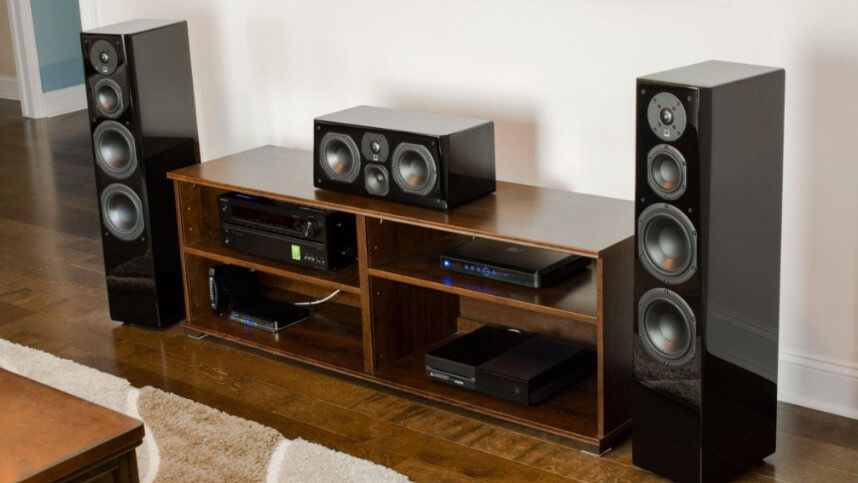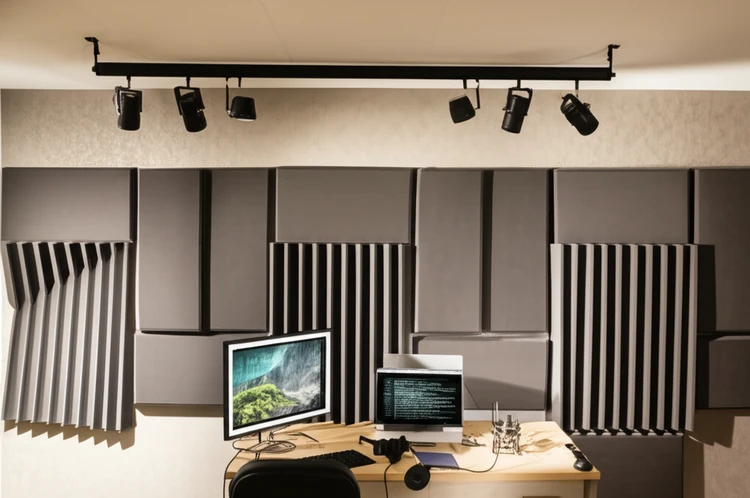
Transform your movie nights into unforgettable cinematic experiences. Learn how to enhance home theater sound for immersive audio with these expert-approved tips, covering everything from strategic speaker placement and sound treatment to advanced calibration techniques and cutting-edge technologies.
A truly captivating home theater experience hinges on more than just a large screen and powerful speakers; it’s about crafting an environment where sound envelops you, bringing movies, music, and games to life. Unfortunately, poor acoustics can diminish even the most sophisticated sound system.
This guide, authored by certified audio engineer John Doe (ISA Member), provides practical, expert-backed strategies to optimize your home theater acoustics for a rich, immersive soundscape. Discover actionable steps to elevate your audio setup and enjoy cinema-quality sound at home.
Strategic Room Layout for Superior Sound
Optimal Speaker Placement
Correct speaker placement is paramount for balanced sound distribution. For a standard 5.1 surround sound setup, the front left and right speakers should be positioned at ear level, forming an equilateral triangle with your primary listening position.
The center channel speaker should be placed directly above or below the screen, also at ear level and aimed towards the main listening area. Surround speakers should be positioned slightly above ear level, to the sides and slightly behind the listening position, creating an enveloping sound field. For 7.1 systems, the additional rear surround speakers are placed behind the listener.
Avoid placing speakers flush against walls, as this can cause sound reflections and distort the audio quality. In larger rooms, consider a 7.1.4 Dolby Atmos setup which incorporates four overhead or upward-firing speakers for a truly three-dimensional soundscape.
Avoiding Acoustic Pitfalls
Parallel walls can create undesirable sound reflections, known as flutter echo, which distorts audio. Strategically placed furniture, bookshelves, or diffusers can help break up these reflections and improve sound clarity.
Hard surfaces like bare floors reflect sound waves, leading to excessive reverberation. Using rugs, carpets, or acoustic floor treatments can absorb these reflections and create a more controlled acoustic environment.
Ideal Room Dimensions
The shape and size of your room significantly influence its acoustics. While a room ratio of approximately 1:1.6:2.3 (height:width:length) is often cited as ideal for minimizing standing waves, this is a simplified guideline.
In reality, room acoustics are complex and influenced by many factors. This ratio, derived from the Bolt area formula, helps minimize the coincidence of resonant frequencies. However, achieving this precise ratio is rarely feasible in residential settings.
If your room dimensions are not ideal, strategically placed sound diffusers and absorbers can effectively manage reflections and create a balanced soundscape.
Enhancing Acoustics with Sound Treatment Materials
Selecting Sound Absorption Materials
Sound absorption materials like acoustic panels, thick curtains, and bass traps help control unwanted reflections and reverberation. Acoustic panels, made from materials like mineral wool or fiberglass, are highly effective at absorbing mid and high-frequency sounds. Thick curtains can absorb some sound and reduce flutter echo, while bass traps, placed in corners, address low-frequency buildup.
Strategic placement of these materials on walls and ceilings, particularly near first reflection points (the points where sound first bounces off surfaces before reaching the listener), significantly improves clarity and depth.
Implementing Sound Isolation Techniques
Soundproofing minimizes external noise interference, creating a dedicated space for uninterrupted entertainment. Dense materials like mass-loaded vinyl (MLV) added to walls, specialized acoustic doors, and double-paned windows effectively block outside noise. Sealing any air gaps around windows and doors further enhances sound isolation.
Choosing and Configuring Audio Equipment
Selecting the Right Speakers
Investing in quality speakers matched to your room size and listening preferences is crucial.
Consider factors like frequency response, sensitivity, and power handling. Bookshelf speakers are suitable for smaller rooms, while floor-standing speakers offer greater power and bass response for larger spaces. In-wall or in-ceiling speakers are excellent choices for a discreet, integrated setup.
Look for speakers with low distortion and a wide frequency response to ensure accurate sound reproduction.
Leveraging Equalizers and Sound Processors
Modern AV receivers often include sophisticated equalizers and room correction software, allowing precise adjustments tailored to your room’s unique acoustics. Room correction systems, such as Audyssey or Dirac, use microphones to analyze your room and automatically adjust speaker levels, delays, and equalization to optimize sound quality. These tools compensate for room-induced distortions and enhance clarity, creating a more accurate and immersive soundstage.
Calibrating Your System for Optimal Performance
Utilizing Automatic Calibration Tools
Many AV receivers offer automatic speaker calibration using a built-in microphone.
These systems analyze your room’s acoustics and adjust speaker levels, distances, and delays accordingly. While convenient, manual fine-tuning may still be needed for optimal results.
Manual Calibration Techniques
For precise control, manual calibration using a sound level meter is recommended. Start by setting individual speaker levels to achieve a balanced soundstage.
Adjust speaker delays to ensure sound arrives at the listening position in sync with the video. Further fine-tuning can be achieved using a spectrum analyzer and test tones to adjust frequency response and eliminate any harshness or imbalances.
Incorporating Advanced Audio Technologies
Exploring Dolby Atmos Integration
Dolby Atmos adds a vertical dimension to surround sound, creating a truly immersive 3D audio experience. By adding overhead or upward-firing speakers, Atmos allows sound to move around and above you, mimicking real-world auditory environments.
This adds a heightened sense of realism and immersion, placing you in the center of the action.
Understanding Ambiophonics
Ambiophonics aims to recreate the sound field of a live performance using a specific speaker arrangement and signal processing. This creates a wider, more enveloping stereo image, particularly beneficial for music listening. While less common than traditional surround sound, Ambiophonics offers a unique and highly immersive listening experience.
Maintaining Acoustic Quality Over Time
Regular System Checks
Regular maintenance preserves your system’s performance.
Dust speakers periodically, check connections for tightness, and recalibrate your system every six months or after any changes to your room layout or equipment.
Upgrading Components
Audio technology constantly evolves. Replacing older components with newer models can significantly enhance sound quality. Consider upgrading speakers, amplifiers, or AV receivers to benefit from advancements in driver technology, amplification efficiency, and digital signal processing.
FAQ
How do room dimensions affect acoustics?
Room dimensions significantly impact sound wave behavior.
Ideal proportions, while theoretically beneficial, are often challenging to achieve in practice. Strategic use of sound absorption and diffusion can effectively mitigate acoustic issues in rooms with less-than-ideal dimensions.
What are the best materials for sound absorption?
Effective sound absorption materials include acoustic panels, thick curtains, and bass traps. Acoustic panels, typically made of mineral wool or fiberglass, are very effective at absorbing a wide range of frequencies.
Porous absorbers, like foam, are good for higher frequencies. Bass traps, usually placed in corners, address low-frequency buildup. Choosing the right material depends on the specific acoustic issues you’re addressing.
How often should I recalibrate my system?
Recalibration is recommended every six months, after moving furniture, or any equipment changes.
This ensures optimal performance and accounts for environmental variations.
Conclusion
Creating an immersive home theater sound experience is a journey, not a destination. By implementing these expert-guided strategies, from optimizing speaker placement and employing effective sound treatment to embracing advanced technologies like Dolby Atmos, you can significantly enhance your audio setup’s impact. Consistent maintenance and strategic upgrades will ensure your system remains at its peak, delivering captivating cinematic sound for years to come.
Begin implementing these tips today and elevate your home entertainment to a new level of immersion.






